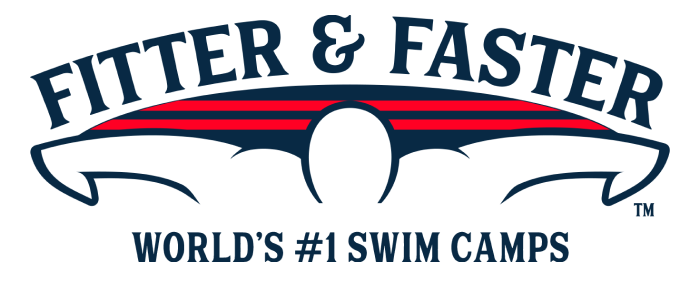Throughout the United States many pools are in jeopardy of not opening for months or even as long as one year. This broadcast is for interested parties to get advice on how to present and communicate their safety plans to “the powers that be” and navigate a complex system.
Questions asked:
- Putting yourself in the position of a public health official, do you think they understand the difference between “Organized Competitive Swimming” and recreational swimming? [3:53]
- How do we illustrate the difference?
- One of the most important questions moving forward for all of us is what data and research can we empower ourselves with to make our case for getting our facilities up & running? [13:53]
- Is there any research that clearly defines a safe and effective return to swimming-related activities?
- What is the responsibility of a business or a public entity, whether it’s a local store, a swim team or swimming venue, a gas station, etc in the era of COVID-19? [20:42]
- During these uncertain times, most, if not many USA Swimming Clubs & Coaches are beginning or have already developed some type of comprehensive reopening strategy that they’ve delivered to their facility, or facility managers; can you share some insight on some of the specifics that you intentionally included in your reopen plan and maybe discuss some of the key aspects that you outlined in the plan? [26:37]
- With so many programs around the nation based out of public schools, there seems to be a tendency to keep everything closed at least until the fall, assuming schools reopen. How do we work with school administrators to get them to change their stance and potentially open before that fall calendar date? [41:15]
- Contacting community leaders and local government may be outside the norm for many club coaches within USA Swimming. All of you have been speaking with various political and community leaders. [55:42]
- Who have you spoken with and what has come from it?
- What steps might our club coaches begin with initially to work on making some connections and establishing a conversation with local leaders and government officials?
- Obviously, we want to make sure that if we enter discussions with local leaders and state governments; we need to ensure that we are prepared. In addition to the comprehensive reopen plans that clubs or facility owners develop, what other aspects of great significance are pertinent to encouraging officials that reopening will be responsible, prudent, and arguably, an essential part of life for our community?
- Is it worth discussing and outlining the success of our club and the role it has played in the community, both from the learn to swim genesis of the organization, through inspiring young athletes to achieve collegiate scholarships and proudly represent our local families at the highest levels of the sport, i.e. Olympic Trials, NCAA’s, etc
- How do we engage our local communities to stand with our clubs and coaches to help encourage local leaders to take notice of our strong feelings about returning to our facilities?
- Can you all discuss the role of social media as it pertains to fortifying your cause?
- How can you strengthen and streamline this message to the public in a way that creates effective reach?
- Do you engage media outlets like local new entities, journalists, etc.
- Are there certain approaches or positions that have been shown to be particularly negative with authorities when trying to get pools reopened?
- For those teams in the states opening much later, i.e. NY, MA, VT, Conn, CA, etc.…is there a way to connect these governmental leaders with other state government agencies to share information or ideas?
- What type of strategies should coaches have when it comes to answering potential questions regarding social distancing when swimmers are passing each other in the same lane? [1:00:30]
- Do you have thoughts on how to maximize the benefits of swimmers having an unprecedented “Covid-19 forced break”? [1:03:12]
Tools you can use:
- CDC “Considerations for Public Pools, Hot Tubs, and Water Playgrounds during COVID-19”
- NCAP COVID-19 Standard Operating Procedures
- USA Swimming Facility Reopening and Planning
- CDC: “Prevent Getting Sick – how COVID spreads“
- Graphics of pools with no swimmers in the water so that teams and facilities can more easily plan different swimmer configurations for presentations
-
- 6 lanes: https://fitterandfaster.com/wp-content/uploads/2020/05/pool_6.pdf
- 8 lanes: https://fitterandfaster.com/wp-content/uploads/2020/05/pool_8.pdf
- 10 lanes: https://fitterandfaster.com/wp-content/uploads/2020/05/pool_10.pdf
- 12 lanes: https://fitterandfaster.com/wp-content/uploads/2020/05/pool_12.pdf
- 23 lanes: https://fitterandfaster.com/wp-content/uploads/2020/05/pool_23.pdf
-
- American Swimming Coaches Association (ASCA): Planning to reopen your learn to swim program
- ASCA: Personal Protective Equipment Safety Practices for your staff
- ASCA: Training in water staff for reopening
- Letter to Donald Trump from Olympic Athletes and Swim Business Leaders
The panel on this webcast is:
- David Marsh, Head Coach of the Team USA Olympic Swimming Team in Rio and current Head Coach of Team Elite in San Diego, CA
- Paris Jacobs, CEO of Machine Brands, LLC. Former USA Swimming Board member 2011-2015. Active consultant for the American Swimming Coaches Association. Member of the Board of Directors for the USA Swimming Foundation.
- Tom Ugast, Owner of Nations Capital Swim Club. NCAP rents one dozen facilities in the metro DC area and has 1,800 team members
- David Arluck, CEO of Fitter and Faster Swim Camps. FFT rents approximately 200 facilities in 47 States annually has more than 25,000 annual participants
—————————————
Visit fitterandfaster.com/live to register for all of our upcoming webinars!
Be sure to follow us on social media to stay up to date on all future #FFTLive
Instagram: @fitterandfasterswimtour
Twitter: @fitterandfaster
Facebook: https://www.facebook.com/fitterandfastertour/







